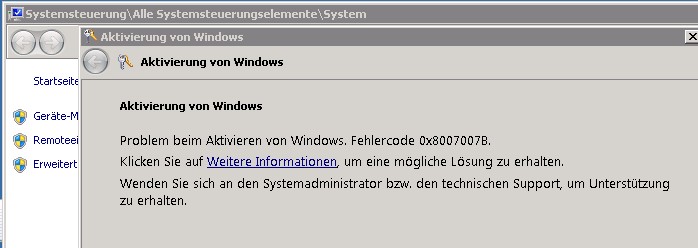
DNS and DHCP services running on Server 2008 R2
Single Domain
Multiple Forward Lookup Zones Configured in DNS
Running KMS Services on Server 2003. (Handles activations of Win7, Server 2008, Ofice 2010) KMS srv record configured in DNS to point all clients to KMS host. This was setup by adding a service record at the root of DNS under _tcp. I added the forward lookup zone _tcp at the root of our DNS for the vlmcs srv record manually.
Prior to Win7 SP1 being released, all clients activated without any issues. Activation issues started when Win 7 and Server 3008 ISO’s were released with SP1 slipstreamed. The error code mentioned in this thread would occur when the activation was attempted from the client. Seemingly the only way to activate the client was to use the MAK code.
After many days pounding on this issue I found a work around that would allow client machines that were built with the SP1 ISO’s to activate through KMS. While not an acceptable solution it does work. The trick was to manually point the client to your local KMS host server. The command to accomplish this is as follows:
From an elivated command prompt on the client machine, type: slmgr -skms “KMS Server IP Address” (without quotations) After entering the command, client machines would activate normally.
At first I thought I discovered the miracle cure for activation issues, but soon decided there has to more to this since I didn’t have the problem before SP1 was released. Plus, running around typing in the above command was not going to be fun given the number of machines affected by this issue.
Many days went by trying to figure this out I came to the conclusion that is must be a DNS issue. SP1 probably fixed some holes in Activation or who knows what. Anyway, to make a long story short, here is what I did to fix the problem.
The main problem was I had to _tcp forward lookup zones in my DNS configuration. One at the root and one in the DomainName forward lookup zone. To fix it, I deleted the _tcp lookup zone from the root of DNS. Next, I added the _vlmcs service record within the domain name _tcp records. This solved activation problems for computers joined to the domain, but not for machines that belonged to workgroups (non-domain computers). To fix activation for non-domain computers, I added option 135 (domain suffix search order) to the DHCP server options. See instructions below.
1. Open up the DHCP MMC.
2. Navigate DHCP and choose the DHCP server name.
3. Right Click on the IPv4
4. Choose “Set Predefined Options”
5. Click on Add.
6. Name: “Domain suffix search order”
Data Type: String
Code: “135” (without the quotation marks)
Description: “List of domain suffixes in order” (without the quotation marks)
String: Enter “avhsd.org” (without the quotation marks)
7. Click OK to save changes.
8. Exit the DHCP MMC and restart the DHCP Server Service.
9. Open the DHCP MMC again and add the new scope option 135 to your server options/scope.
10. Windows 7 w/sp1 and Office 2010 will activate without issue.
Once these steps were taken, the activations worked as expected.
I hope this helps fellow IS people to fix activation problems.


 Click on the Category button to get more articles regarding that product.
Click on the Category button to get more articles regarding that product.